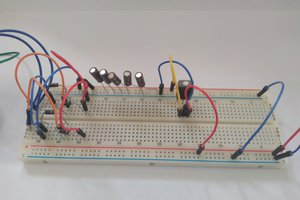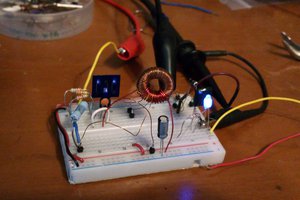tage is often increased due to poor contact of the potentiometer and the load is burnt. If you add a transistor (as shown in the figure below), under normal circumstances, the base potential of T1 is 0, and T1 is cut off, which has no effect on the circuit; and when W1 is in poor contact, the base potential of T1 rises, and when it rises to At 0.7V, T1 turns on, reducing the voltage of the LM317T adjustment terminal and the output voltage, thereby protecting the load. If the transistor is removed and the W1 center point connection is disconnected, the small 3.8V bulb will be burnt immediately, and the measured output voltage will be as high as 21V. When T1 is added, the brightness of the small ball is reduced, and the output voltage of LM317T is only 2V at this time, which effectively protects the load.

 Electroniclovers123
Electroniclovers123
 mircemk
mircemk
 electronicsworkshops
electronicsworkshops

 Adam Oakley
Adam Oakley
In my opinion, we all are needed to use some social networks to make our lives as more as calm. I used the linkedin api on this weblink https://data365.co/linkedin and one day I realized that I had a lot of possibilities to use LinkedIn as much as I wanted recently. Accordingly, in this case, I started using this particular source every time, which helped me to solve this issue.